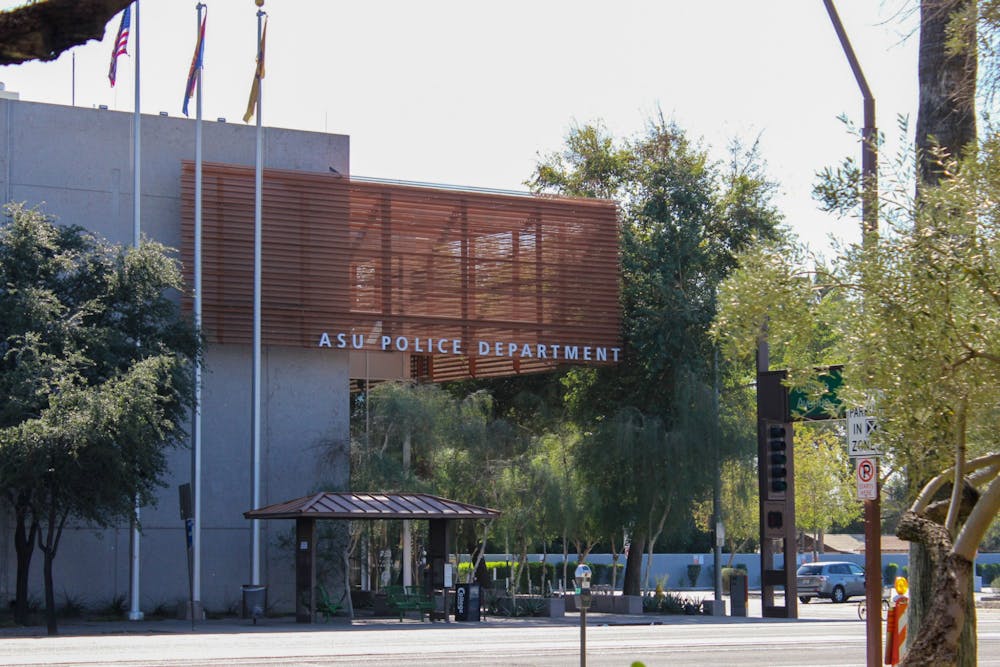In January of this year, ASU professors published a book called "Transforming the Police: Thirteen Key Reforms" based on research strategies to alter police departments in a revolutionary way.
The editors, ASU criminology professors Charles Katz and Edward Maguire, said the idea for the book first began when Jonathan Koppell, dean at the Watts College of Public Service and Community Solutions, approached them and said he was interested in faculty providing their own ideas about what reforms are necessary in American policing today.
The book then utilized the different perspectives of multiple academics at ASU, who each wrote a key reform within the book.
Maguire said one of the main goals of the book was to introduce strategies that have already been supported by research but have yet to be implemented here in the United States.
“There is a fantastic body of research evidence coming out of Europe,” Maguire said. “In this country, by and large, we really aren’t using this body of research.”
The book is composed of 13 strategies based on research tactics. Each of those ideas then has a response essay written by a member of the police force, who used their experience and perspective to determine how to make those strategies more realistic.
Katz said the reason the book was designed to include both a strategy and a response was because he wanted the book to prove that academics and officers should be collaborating on a more frequent basis.
“This is not just something that academics think is important, but also practitioners and police leaders themselves believe is important,” Katz said.
Chapter 2: Implement Collaborative Strategic Crime Control Initiatives
Jessica Huff, a graduate criminology and criminal justice student and co-author of this strategy with Professor Katz, said the strategy consisted of five tactics.
These tactics include community-wide problem analysis, targeted evidence based responses, collaborative partnerships, strategic planning and accountability.
Huff said that by utilizing all five of these tactics, officers can have defined goals on how to help the community that can remain intact regardless of who’s in charge or how many years have passed.
“With this process, we can really ensure that community safety is something we are actively moving toward and everyone's doing their part to make it happen,” Huff said.
Huff said one of the reasons why they were so bold in recommending their ideas was because the strategies had already been proven to be successful based on several metrics.
“These have been established as effective strategies using metrics like the Campbell Collaboration, which evaluates criminal justice, strategy effectiveness, as well as websites like crimesolutions.gov, where you can go and register your experiment as effective or not effective, and then it's very rigorously reviewed,” Huff said.
Chapter 9: Build Police-Researcher Partnerships to Advance Policing
Katz said this strategy was dedicated to the notion that police and academics should be collaborating on a frequent basis, as well as coordinating with universities, because it allows for academics to implement effective strategies in police departments and gain a better perspective on how to help police departments and appreciate the officers.
“So the students are learning more about how to help police conduct research but also how that research can be better integrated with the needs of the police department,” Katz said.
Katz also suggested that allowing universities and police departments to work together would impact the community by letting both experience and knowledge blend together to create a more holistic approach to criminal justice.
“Police and colleges need to be collaborating with one another, not working on their own silos ... to develop, respond to problems that affect the community,” Katz said.
Chapter 11: Promoting Officer Health and Wellness
Maguire said it's hard to expect officers to protect our health and safety if they aren’t healthy — both physically and mentally.
“They have much higher risks of cardiovascular disease and metabolic syndrome, Type 2 diabetes … and these issues are not receiving enough attention,” Maguire said.
Officers are not only at a higher risk of dealing with health-related diseases but also face a higher rate of suicide as well. According to Blue H.E.L.P., a Massachusetts-based nonprofit that tracks police suicides, 228 officers died by suicide in America in 2019.
Maguire says these statistics could change if we emphasized health and wellness in the police force, rather than assuming police health is only limited to firearms or assaults.
Reach the reporter at slbrinso@asu.edu or follow @Stacy_L_Anders on Twitter.
Like The State Press on Facebook and follow @statepress on Twitter.




